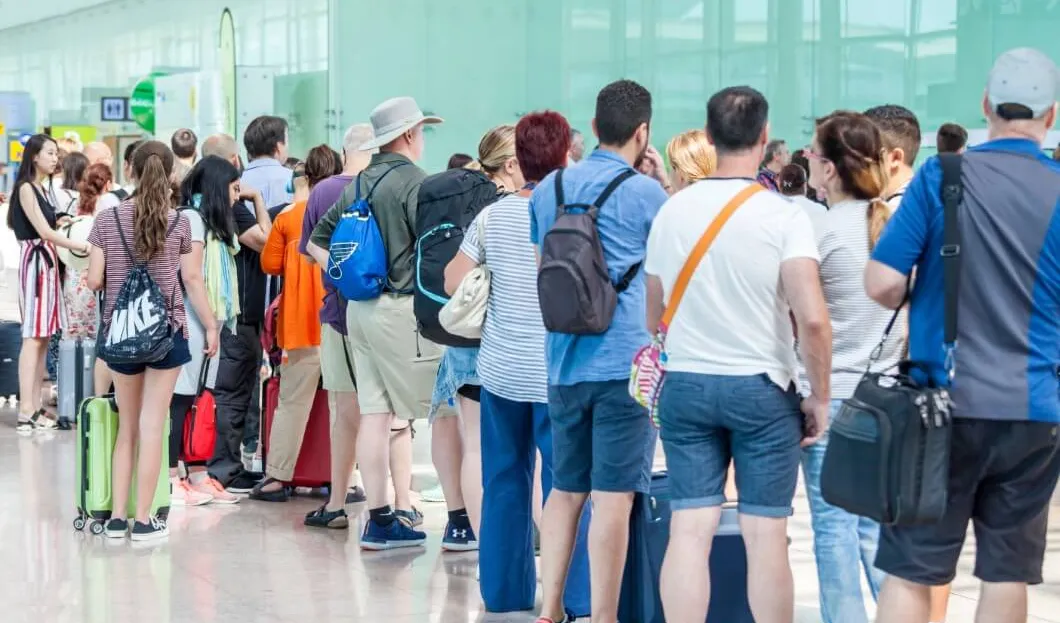
The summer season in Europe is expected to be exceptional, with a projected increase in inbound tourism. International arrivals to Europe in July and August are expected to grow by 12% compared to the previous year, slightly higher than the global average of 11%. This growth is mainly driven by travel within the region, up by 10% compared to 2023, and a significant increase in visitors from long-haul markets in Asia Pacific (11%) and the USA (21%).
The rise in flight searches and ticket bookings indicates a strong interest in European destinations, despite ongoing global economic challenges. This is partly due to significant events during the summer, such as the UEFA Euro 2024 football tournament in Germany and the Olympic Games in Paris. However, there might be some financial uncertainty, as there is faster growth in economy-class seats (11%) compared to premium-class tickets, which have remained at similar levels to 2023 (1%).
CEE Region Is Growing Fast
Central and Eastern Europe (CEE) experienced a rapid increase in inbound tourism following a delayed recovery period due to the war in Ukraine, which had previously deterred tourists. This summer season, the region anticipates a substantial 23% rise in tourist numbers compared to last year. Northern Europe is also expected to grow faster (+12%) than Southern European destinations (+10%), indicating a general recovery trend across all European subregions.
The Best-performing Cities
European city destinations are experiencing a surge in tourism, surpassing traditional beach holidays. Cities such as Munich (+37%), benefiting from major sporting events this summer, are seeing significant growth. This trend is consistent across European regions, with notable increases in various cities, including Vienna (+23%), Edinburgh (+19%), Madrid (+16%), and Venice (+16%).
While medium-length stays account for most intra-regional arrivals (63%), short trips lasting one to three nights show the highest growth in 2023 at +23%, making up 16% of all stays. Long trips of over two weeks are experiencing more modest growth at +5%.
China and Japan Drive Asia-Pacific Tourism
The Asia Pacific region is starting to see signs of recovery, with a significant increase in the number of visitors from China (+64%) and Japan (+53%) compared to 2023. This surge in travel can be attributed to better air connections and the relaxation of travel restrictions in these countries. While overall numbers are still lower than before the pandemic, better air connections have led to a surge in travel from these countries. China, in particular, now accounts for a much larger share of seat capacity than before the pandemic (+12 percentage points). This is partly because of limited connectivity between China and the U.S., which has led Chinese airlines to use their large aircraft for flights to Europe instead.

Events Drive the Demand
The impact of events on tourism demand is significant. For example, as the host of the UEFA Euro 2024 football tournament, Germany has seen a 19% increase in arrivals compared to the same period in 2023. Similarly, travel demand during the Olympic Games in Paris has also increased, particularly from top-performing markets such as China (+124%), Japan (+57%), Germany (+32%), and the USA (+25%). When looking at destination cities for Taylor Swift’s Eras Tour, there is a noticeable spike in arrivals around the concert dates compared to the overall summer period. This includes Stockholm (+136% vs +15%), Warsaw (+203% vs +31%), and London (+45% vs +12%).
These specific shifts, closely linked to event dates, emphasize the significant influence of major events in driving growth, even in times of economic decline, as there is sustained demand for unique experiences. Destinations with well-established infrastructure, like stadiums, concert halls, or festival venues, stand to benefit significantly from this trend.










